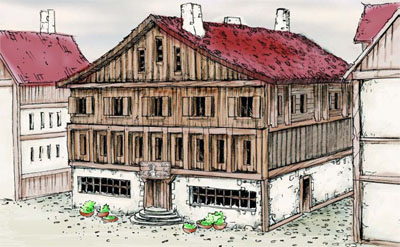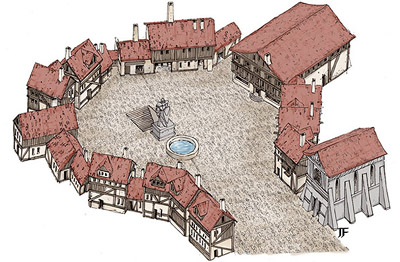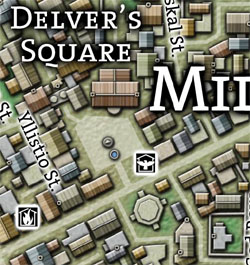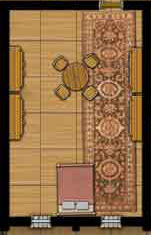IN THE SHADOW OF THE SPIRE
Prelude 2: The Awakening – Tee
In which our heroine elf awakes to a welcome (yet surprising) homecoming, only to discover that things are not always what they seem and the past is not so easily forgotten (even if it has been completely misplaced)…
When I pitched In the Shadow of the Spire to my prospective players the campaign didn’t even have a name yet. Actually, it didn’t have much form at all. I only knew two things:
(1) I had pre-ordered Ptolus and it would be arriving within a couple of weeks. I already knew enough about the city to know that I wanted to run an urban-based campaign there, but I (obviously) didn’t know a lot of the details.
(2) I wanted to incorporate the Banewarrens adventure into the campaign. I first read this adventure back in 2002 and I’d been itching to run it ever since. In some ways I had actually started laying the groundwork for this campaign way back then, when the players in my original 3rd Edition campaign passed through the port city of Ptolus and saw the Spire for the first time:
(That’s a player handout modified from a DM-only reference image.)
As I started wading through the Ptolus tome and the campaign began to take shape in my mind’s eye, one of the things I realized early on was that the PCs shouldn’t be from Ptolus itself. It would be more interesting, in my opinion, if their characters were exploring the city with the same fresh eyes that they were. It would also be more disorienting (for both players and PCs) to awake with amnesia in completely unfamiliar surroundings.
Those of you who have been reading the campaign journal from the start, however, may have noticed a slight incongruity here: Tithenmamiwen is from Ptolus.
No plan, however, survives contact with the enemy… or, in this case, the players.
Actually, though, trying to push this one off on the player is a bit disingenuous on my part. Tee’s player simply came to me with the idea of playing an elf. The character concept she was discussing in general terms, however, struck off all kinds of resonance for me with the work I had just recently put into fleshing out some of the elven communities in Ptolus itself.
Taking a step back, I realized that it made more sense to tap into this pre-existing development work and use it as part of Tee’s background. I also came to the conclusion that variety is the spice of life: Yes, it was interesting to have both players and PCs coming to the city with fresh eyes. And, yes, that lack of familiarity was disorienting.
But there was also something inherently interesting in the broken homecoming experienced by Tee: She had left home for reasons she didn’t fully understand and now she was back again for reasons she didn’t even know. There was a disoriention to be found there as well, and a useful contrapuntal beat to the other characters.
This decision also had some long-term consequences that I hadn’t fully considered. For example, Tee had a greater sense of ownership in the city than the other PCs… which meant that her reputation was important to her from Day One. She needed to be able to live there when all was said and done, which meant that she helped to keep some of the more radical impulses of the group in check.

















